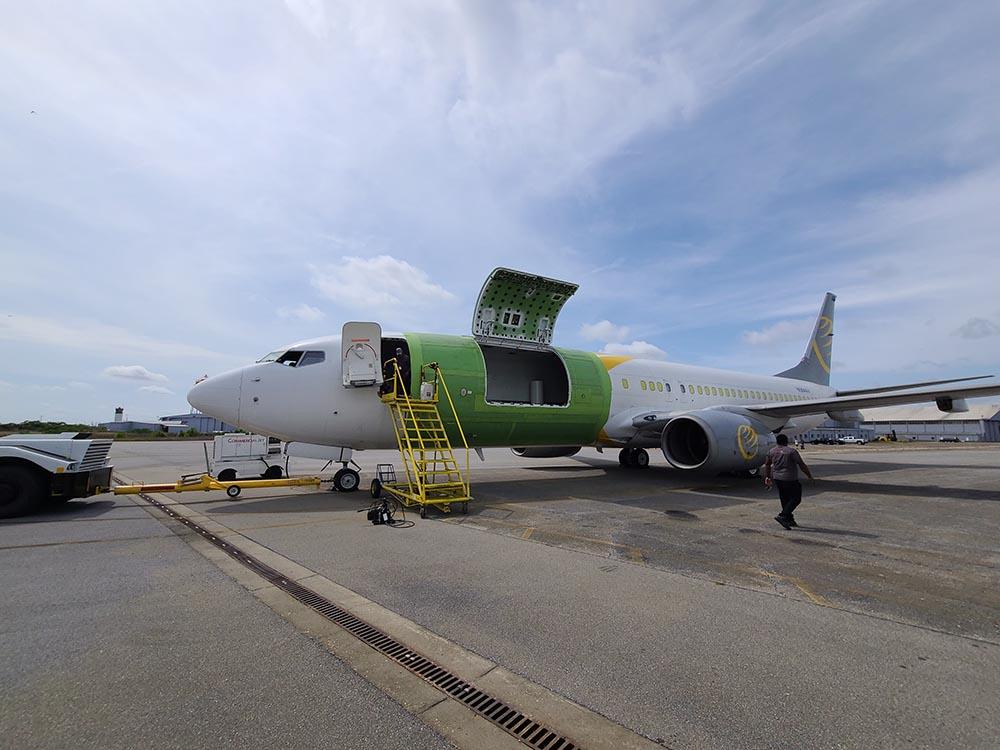
Strong passenger narrowbody lease rates, shortages in passenger aircraft and slowing consumer spending are contributing to a falling number of lessor-driven, speculative Boeing 737-800 cargo conversions.
As the number of lessor-driven, speculative conversions diminish, Miami-based conversion company, Aeronautical Engineers, Inc. (AEI) says slot waiting times for 737-800SF passenger-to-freighter (P2F) conversions has fallen from 1.5 years to months.
“The falling number of speculative conversions means we are reducing capacity at centers with multiple conversion lines,” says Robert Convey, senior vice president of sales and marketing at AEI. “We have halved capacity at AEI conversion centers in Miami and Alabama to two lines each. If you want a 737-800SF tomorrow, bring it, and I will probably start it before the end of the month.”
AEI redelivered 47 freighter conversions of all types in 2022, including 33 737-800SFs, demonstrating solid demand for the type. New 737-800SF redeliveries are now going directly to operators, often replacing ageing 737 Classic freighters which remain in active service. Other 737-800SF conversions are also needed by operators for new contracts and growth markets.
During the pandemic, Convey says speculative conversions by lessors consumed about 90% of slots, while operators took about 10%. At the time, lessors turned to P2F conversions as a way to use underutilized passenger assets and take advantage of the booming e-commerce and freight market. Returning passenger demand now means the narrowbody conversion market is returning closer to its traditional 50% split between lessors and operators.
“It is harder now to find suitable conversion candidates because the passenger operators are so busy,” says Convey. “There are currently many factors in play at the moment that are putting us in this situation. Airlines cannot rely on new aircraft deliveries and are extending leases on [Boeing 737] NG and [Airbus A320]ceo products. Passenger airlines are also going to the market to acquire used assets to make up the shortfall from the OEMs. This is impacting conversion feedstock availability and increasing the initial acquisition price.”
Reliability issues with new generation engines also mean operators are increasingly reluctant to release older legacy types.
There are instances of 737-800 passenger aircraft yielding higher lease returns compared to freighters. This means lessors have less impetus to invest millions in a P2F conversion for a lower lease return than they would get if they kept the aircraft in passenger use.
The many 737 lessors that made a profit from speculative conversion during the pandemic are now taking a break. “They are not saying, ‘We do not believe in the freighter market,’ but speculative conversions are not delivering as fast as they previously have. These factors mean some investors are taking a break and sitting back,” says Convey.
Once new aircraft deliveries, disruptions to the supply chain and engine reliability issues are resolved, it is likely that there will be an influx of used 737-800s in the market. However, it is expected that the next wave of conversion candidates to come out of passenger service will be run-out in terms of engines, landing gear and maintenance.
This means conversion candidates will be available at a lower initial acquisition price. But investors and operators must put more work into the aircraft during conversion to bring it up to standard, and to extract the maximum life out of the investment.




